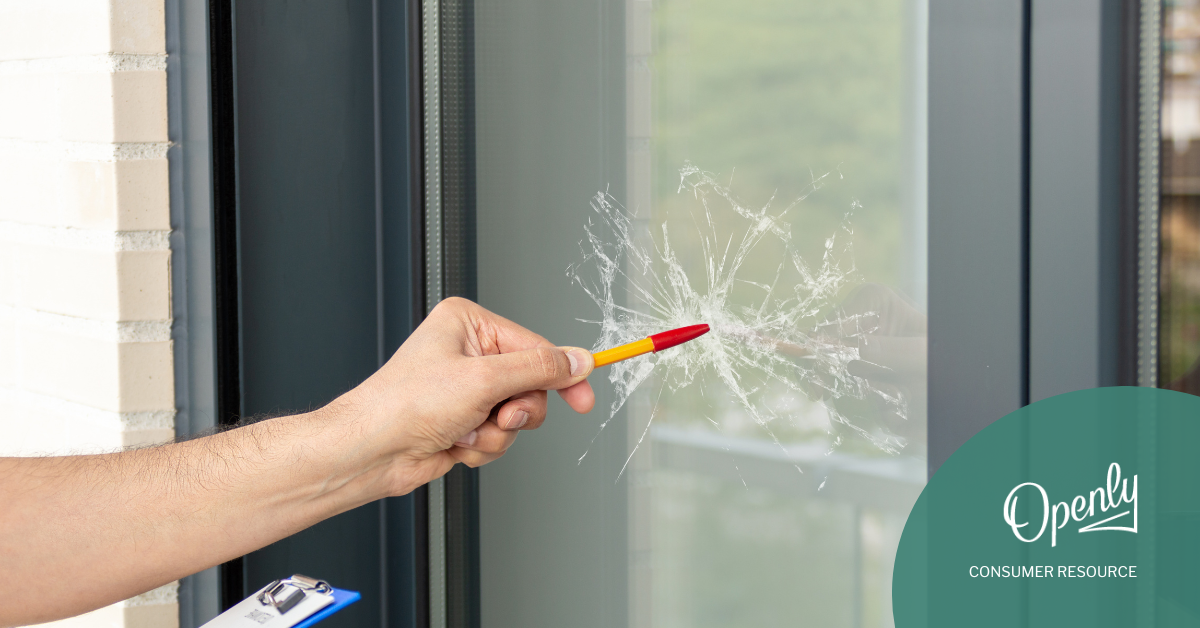Vandalism is a distressing experience for any homeowner.
Whether it's graffiti painted on your garage, windows broken due to a vandal throwing a rock, or deliberate damage to your landscaping, the financial and emotional costs can be substantial. That’s why understanding your homeowners insurance policy’s coverage for vandalism is integral to protecting your property and ensuring you're prepared if the unexpected happens.
At a glance:
- Most standard homeowners insurance policies cover vandalism, including damage to the dwelling and personal property.
- Filing a vandalism claim can increase your insurance premiums, so carefully weigh the cost of repairs against the potential impact.
- Preventative measures like security systems, adequate lighting, and neighborhood watch programs can significantly reduce the risk of vandalism.
What is vandalism in insurance terms?
Vandalism, as related to home insurance, refers to the willful and malicious destruction or damage to property. Insurance companies carefully investigate vandalism claims to determine the cause of damage and whether it falls within the policy's definition of vandalism.
Some common types of vandalism include but are not limited to:
- Graffiti—Markings on your home's exterior, including fences and garages
- Broken windows—Deliberately broken or cracked windows, including both those in your dwelling and other structures on your property
- Property damage—Intentional damage to doors, fences, landscaping, or other structures on your property
- Arson—The intentional setting of fire to your property
Standard homeowners insurance coverage for vandalism
Most standard homeowners insurance policies include coverage for vandalism. It's important to note that vandalism coverage generally applies whether you are present at the property or away when the incident occurs, although there is typically a vacancy stipulation in the policy that may limit coverage.
Insurance coverage typically consists of two main parts:
- Dwelling coverage—Coverage for damage to the structure of your home, such as the roof, walls, foundation, and even attached structures like garages and porches. If vandals damage your home's interior and exterior, this coverage will help with the cost of repairs or replacement.
- Personal property coverage—Protection for personal belongings within the home, such as furniture, electronics, clothing, and valuable collections. If vandalism results in damage or total loss to personal belongings, your insurance provider can help cover the cost of replacement.
Limitations and exclusions to insurance coverage for vandalism, either to the dwelling or personal property, is dependent on the specific home insurance policy and provider you have selected. Be sure to carefully review your policy to understand the limits, whether or not your policy provides actual cash value or replacement cost coverage, and reach out to your insurance agent if anything is unclear or you would like to adjust the limits to your policy coverages.
Situations where vandalism may not be covered
While most standard policies cover vandalism, there are some situations where your home insurance coverage may be denied or be limited by your insurance provider:
- Vacant homes—If your home is left vacant for an extended period, typically 30 to 60 days, your vandalism coverage may be reduced or even excluded. Insurance companies may consider a vacant home more susceptible to vandalism and other risks.
- Excluded perils—Some policies may have exclusions related to vandalism. For example, if you have high-value items located on the premises, like expensive art, collectibles, or jewelry, these items may have limited coverage for vandalism, or there might be exclusions for certain types of vandalism acts.
Steps to take if your home is vandalized
In the unfortunate event you are the victim of vandalism to your property, there are several steps you should take:
- Safety first—Prioritize your safety and the safety of the inhabitants of the home. Do not enter the home if you suspect any danger.
- Document the damage—Take clear photos and videos of all the damage, including close-ups of any graffiti, broken windows, or other affected areas. Be sure to include the date and time of the incident in your documentation.
- Contact the police—File an official police report as soon as possible. Provide the police with all the details of the incident and any evidence you have gathered.
- Make temporary repairs—To prevent further damage and protect your property, make temporary repairs as needed. For example, board up broken windows or secure damaged doors.
- Notify your insurance provider—Contact your insurance agent or insurance provider as soon as it is safe to report the incident and begin the claims process. Be sure to provide them with all of the necessary information, including the police report and damage documentation.
- Schedule repairs—Once your home has been secured, police contacted, and you have notified your insurance provider, you can focus on repairing your property and repairing or replacing your personal belongings as needed. Your insurance agent or insurance provider may have a list of recommended service providers who can help get your home back to how things were.
How vandalism claims affect your insurance premiums
As with all claims against a home insurance policy, filing a claim for vandalism can impact your future insurance premiums. Before filing a claim, it's important to weigh the cost of repairs against the potential increase in your insurance premiums. If the cost of repairs is relatively low, it might be more cost-effective to pay for them out-of-pocket rather than risk a potential premium increase.
Insurance companies consider several factors when determining your premiums, including:
- Claim frequency—The number of claims you file may impact your premiums. Frequent claims can signal to the insurance provider that you are a higher risk, resulting in higher premiums.
- Claim severity—The cost of the damage from each filed claim, including vandalism, plays a role when determining your premiums. Expensive claims may have a greater impact on your premiums.
Measures to take to protect your home against vandalism
Fortunately, there are proactive steps homeowners can take to reduce the risk of vandalism to their home:
- Install security systems—Home security systems, such as surveillance cameras, alarms, and motion sensors, can help deter vandals and provide evidence if a vandalism incident occurs.
- Adequate lighting—Ample outdoor lighting around your property, particularly in dark areas, can help reduce the risk of vandalism, as well-lit areas are less attractive to vandals.
- Neighborhood watch programs—Participating with your neighbors in a neighborhood watch program helps to deter crime and vandalism not only to your property, but to that of your neighbors, and allows for quick reporting of any suspicious activity.
- Regular maintenance—Keep your property well-maintained, as unkempt properties can signal neglect or vacancy to vandals, making the home a more appealing target for crime.
Reviewing and updating your insurance policy
Regular review of your current home insurance policy will help you understand the specifics of your policy’s vandalism coverage. Pay special attention to any limitations, exclusions, and deductibles, as certain perils may not be covered, resulting in denied claims.
Consider speaking with your insurance agent to discuss your current coverage levels and ask any questions you may have. Not only can they help you understand your policy better, but they can advise you on any potential gaps in your coverage. If after reviewing your current home insurance policy you feel your current coverage is inadequate, you can explore options for adding endorsements or increasing coverage limits to better protect your property.
Protect your home from vandalism with the right insurance
Vandalism can be a distressing, and costly experience for homeowners. While most standard homeowners insurance policies include coverage for vandalism, it's important for homeowners to understand the specific terms and conditions of their policy.
Taking proactive measures through installation of security systems, adequate lighting, and even participating in neighborhood watch programs, can help you significantly reduce your risk of vandalism and better protect your home.
For comprehensive homeowners insurance coverage tailored to your specific coverage needs, including vandalism coverage, consider Openly. Our network of trusted independent agents can help you understand your policy, identify potential gaps, and ensure you have the protection you need to safeguard your home and belongings, for better peace of mind.
* We provide this information to help you understand insurance. Any coverage is subject to the terms of your policy. Please refer to your policy and declarations page for complete terms, conditions and coverage details.




